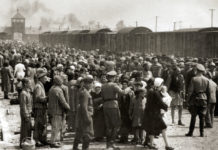
Germany, what is historically known as Bundesrepublik Deutschland, or the Federal Republic of Germany, is a country that has been challenged by stability issues and unity in many instances. When you read about Germany in historical books, you’ll only learn about the wars, divisions and the dictatorship that affected what Germany would be until 19889 and 1990 when Berlin wall was collapsed and the East United with West respectively. Remember, at such a time, many countries around the world, including most third world countries had attained their independence and were already struggling to build up their economies. However, Germany later rose and is now an economic giant in the larger Europe. So, how did Germany come to exist?
- Germanic tribes
During the Iron Age, it was believed the Germanic people came from different tribes that dominated Europe by then. They had unity and a strong army which was witnessed in the 15th century when they drove out the Romans and moved in to occupy Great Britain and Western Europe. However, it is believed that control of ancient Germany region was never stable, and it kept shifting from Germanic Tribes to the Roma Empire and so forth. It was not until 9CE when Arminius led his troops to defeat the Romans in the battle of the Teutoburger Wald. The victory was however short-lived as the Romans went back, reorganized and conquered the region again. It is evident in the current name cities, which mostly depict ancient Rona rulers like Mainz, Cologne and Augsburg.
- Charlemagne
It seemed like in ancient Europe, Christianity was also a tool of conquering as Merovingian king, Clovis ruled over Franks with an iron-fist after converting into Christianity. Franks was a large empire which comprised modern-day Germany, France and the Netherlands. Clovis’ successor Karl der Große, famously known as Charlemagne was made Kaiser in 800 by the then pope which saw him extend his territories at will. He built a Hoy empire known as the First Reich which would later come to be Germany, Rhine and France. However, Karl der Große died in 1814, and his heir sons were unable to rule with an iron fist like their father, and this saw the further collapse of present-day Germany into separate kingdoms, duchies and principalities.
- Otto von Bismarck
Otto von Bismarck saw a window opportunity created by the radical industrial revolution in Europe to unite the Prussians and Germany. At that time, Napoleon had taken over France troops, something that was determined to make the Prussians even stronger. On the other hand, Germany was divided into 35 confederated states to enable easy governing and unity. Before that, there were several German-France liberations which culminated in 1848, when the super Chancellor, Otto von Bismarck decided to take diplomatic duties on his hands. His mission was to see the unification of Germany and Prussians. Otto von Bismarck was an older folk of the military, and maybe this was just his dream since the hay days. He, later on, waged war against Austria and Denmark in 1864.
- Germany after 1945
Germany got her first opportunity to have a solidified centralized government immediately after the end of World War II. Remember, after Hitler showed his capabilities to push the law of Enabling Act through parliament, the then chancellor saw an opportunity to become German’s lifetime ruler. Hitler is the one who initiated World War II by invading Poland, but was later defeated and is believed to have committed suicide in 1945. Konrad Adenauer was crowned first Germany’s chancellor in 1949 and ruled for 14 years. However, it is also important to note that after the end of World War II, Germany disintegrated into two halves, East and West.




































